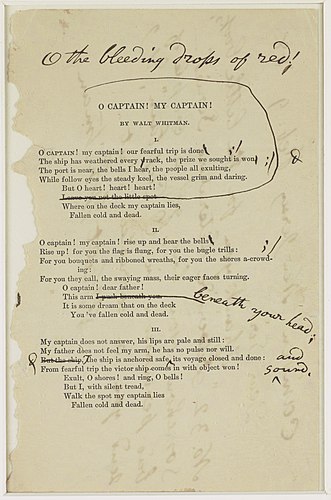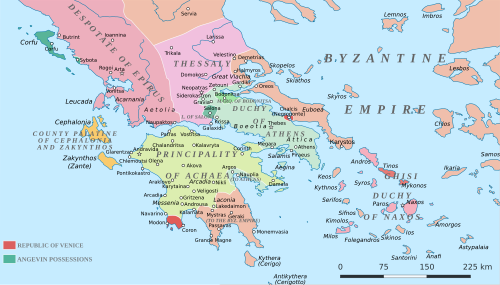O Captain! My Captain!
 O Captain! My Captain!.
O Captain! My Captain!."O Captain! My Captain!" is an extended-metaphor poem written by Walt Whitman in 1865 about the death of U.S. president Abraham Lincoln. Well received upon publication, the poem was Whitman's most popular during his lifetime. Whitman was employed by the federal government in Washington, D.C., through much of the Civil War, and, though he never met Lincoln, Whitman felt a connection to him and was greatly moved by his assassination. "My Captain" was first published in The Saturday Press on November 4, 1865, and appeared in Sequel to Drum-Taps later that year. He later included it in the collection Leaves of Grass and recited the poem at several lectures on Lincoln's death. Critical opinion has shifted since the mid-20th century, with scholars deriding its conventionality and unoriginality. In popular culture, the poem experienced renewed attention after it was featured in Dead Poets Society (1989), and is frequently associated with the star of that film, Robin Williams.








